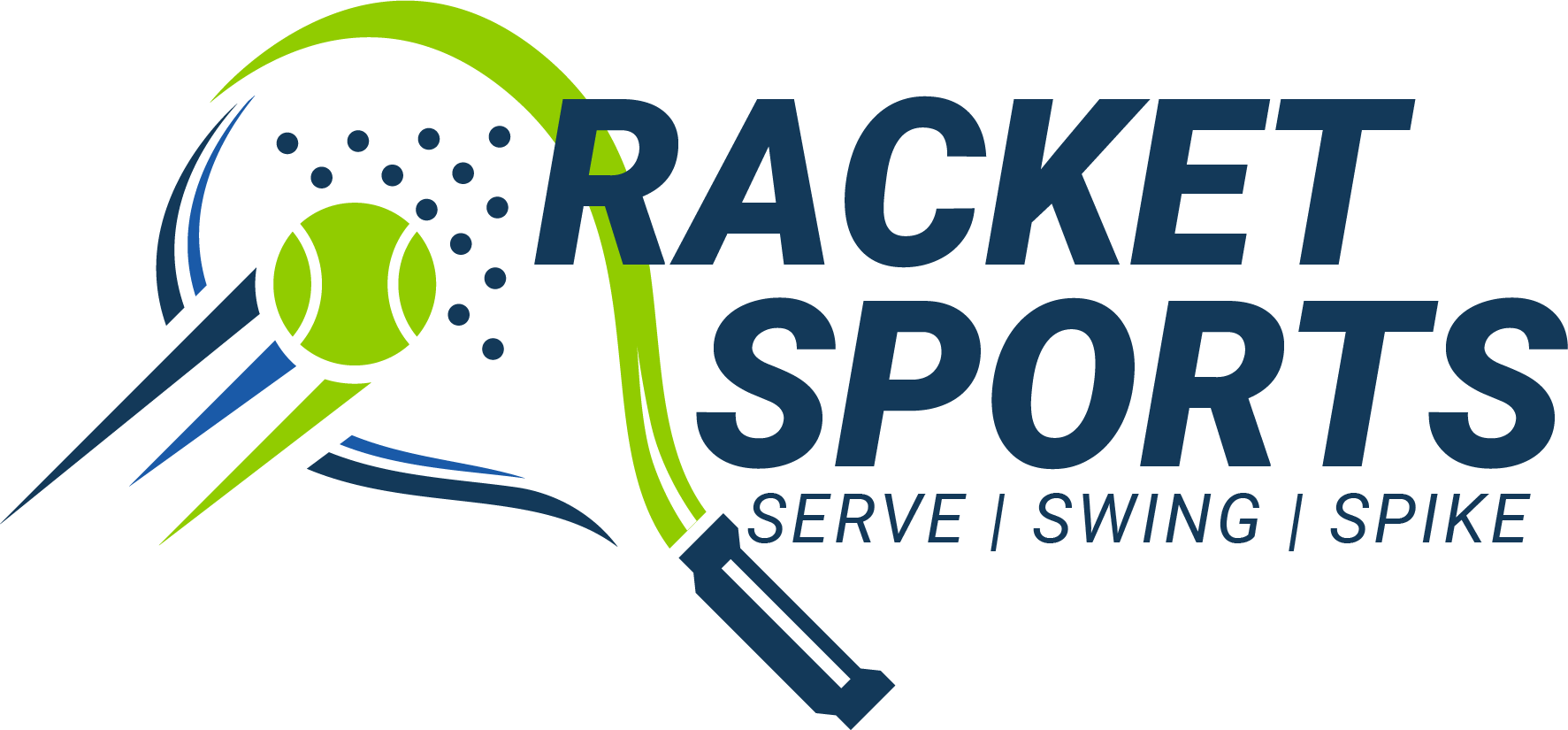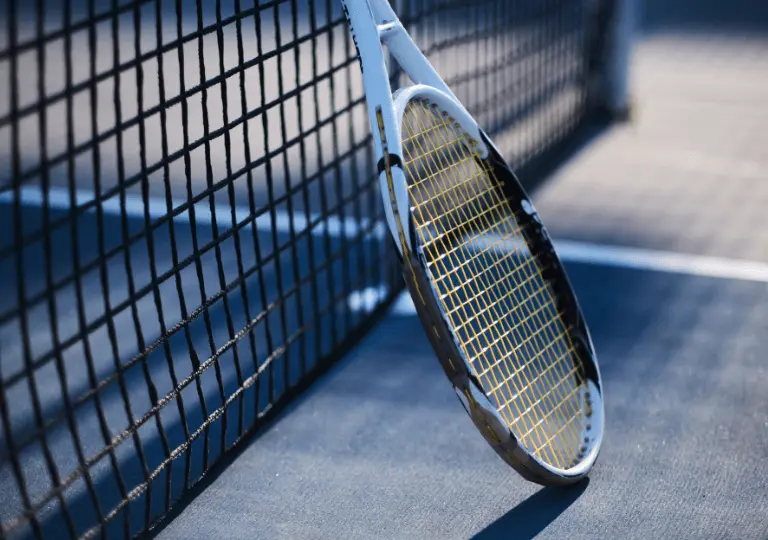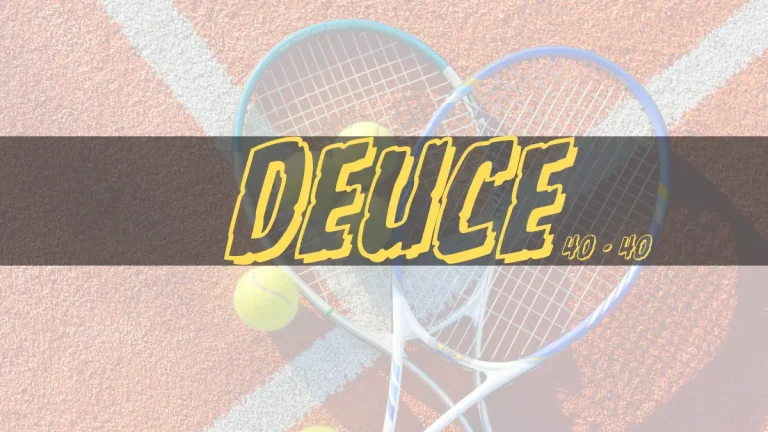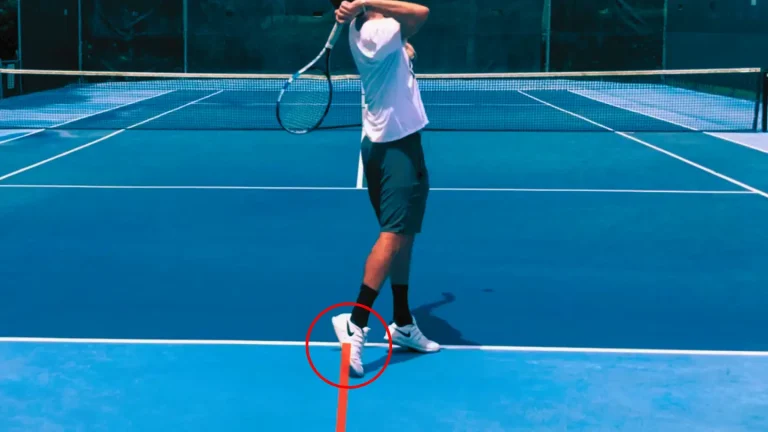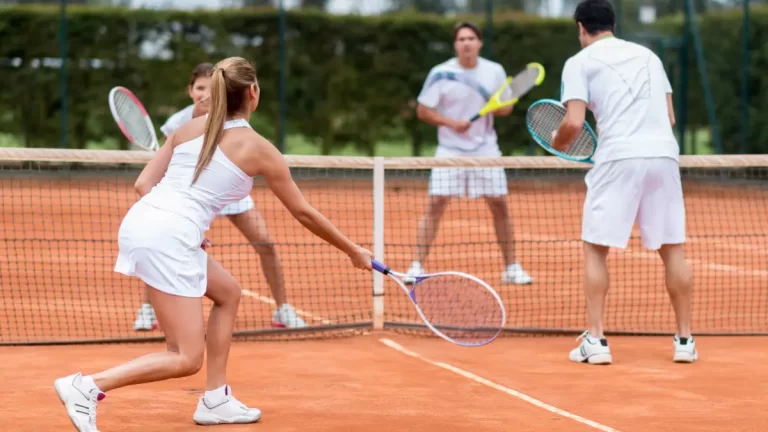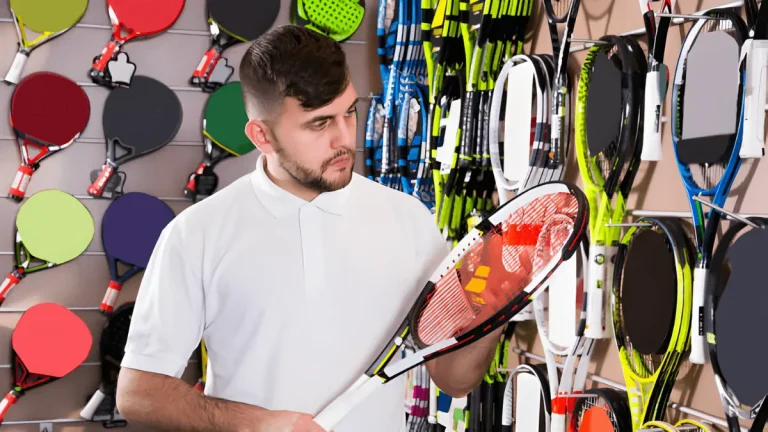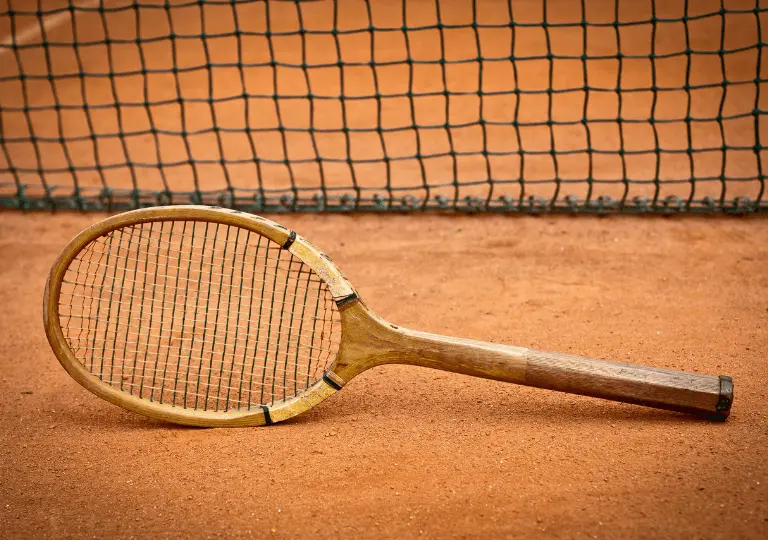Best Tennis Rackets for Tennis Elbow | Buying Guide 2024
Learning tennis techniques for long hours can cause tennis elbow, mainly if you use the wrong rackets. It’s normal not to get the tennis swings perfect initially, which can strain your arm and lead to tennis elbow. Although overusing arms is a common problem among practicing tennis players, you still need to recover. Just resting and stretching will only fix it partially.
The solution is finding the right racket that can help reduce the pain or even make it go away completely. The best tennis rackets for tennis elbows are medium-weight with head sizes of 98 to 105 sq in. They should have soft strings and an open string pattern to absorb shocks better. Also, these rackets feature a lower swing weight and a 50 to 60 RA.
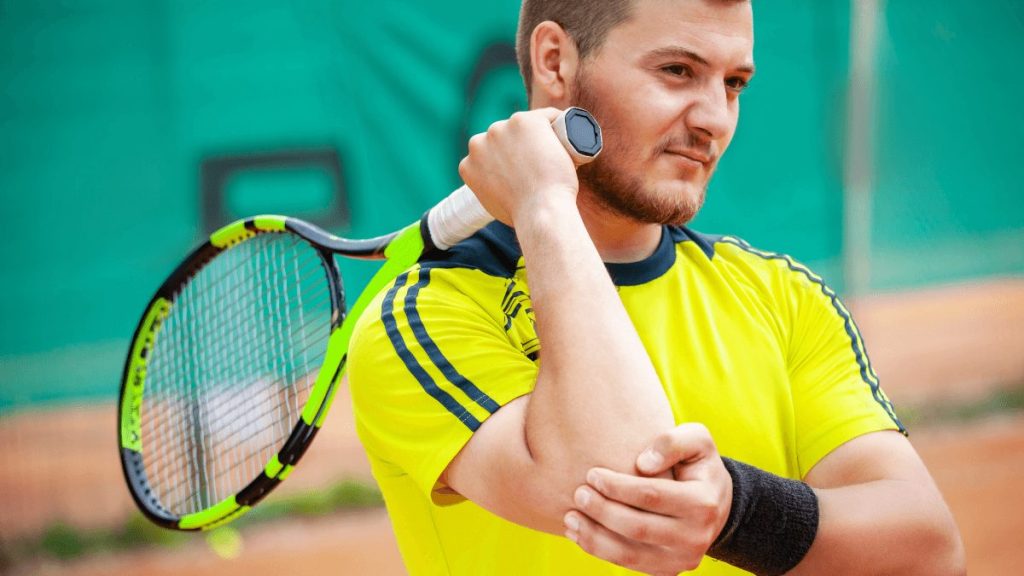
Considering all these features is hard, so I’ve made this guide. With over ten years of experience in tennis, it was no shock to me that I developed a tennis elbow. After carefully testing, I’ve handpicked the best elbow-friendly rackets for your arm. Let’s find the perfect racket for you!
Quick Picks
| Sr # | Brand | Best For | Age Group | Check Price |
|---|---|---|---|---|
| 1 | Wilson Clash 100 Pro V2 | Advanced | Adult | Amazon |
| 2 | PRO KENNEX Black Ace 315 | Intermediate | Adult | Amazon |
| 3 | VOLKL V – Cell 1 | Shock Absorbing | Adult | Amazon |
| 4 | Prince Phantom 100 G | Beginner | Kids | Amazon |
| 5 | Yonex VCore 100 | Spin Shots | Adult | Amazon |
| 6 | Wilson Blade 98 V8 | Flexible | Adult | Amazon |
| 7 | Pro Kennex Ki Q+Tour Pro(325) | Accuracy | Adult | Amazon |
| 8 | HEAD Graphene 360+ Gravity Tour | Powerful Shots | Adult | Amazon |
Top 8 Best Tennis Rackets For Tennis Elbow
1. Wilson Clash 100 Pro V2 – Best Advanced Tennis Racket for Tennis Elbow
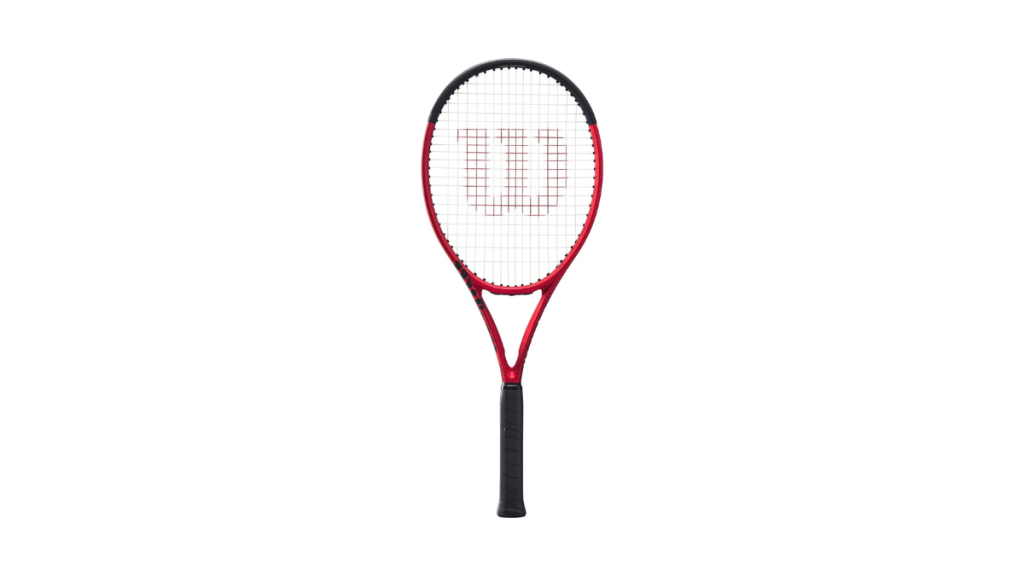
4.0
Specifications:
As an advanced player, power and spin are two things you need. Wilson Clash 100 has been known as a great tennis elbow racket but lacked power. The upgraded Wilson Clash 100 Pro V2 is for that. Its 310-gram weight and advanced technologies make it perfect for players who have developed their skills. Whether you like to hit with lots of spins or prefer straight shots, this racket is versatile.
The head size is 100 square inches with a length of 27 inches, so it’s easier to hit the ball without hurting your arm. Featuring innovative Parallel Drilling technology, it’s designed to be forgiving. The racket’s stiffness rating is low at 57 RA, but you still need to use soft strings like gut, synthetic gut, or multis. The string pattern is 16×20; the recommended setup for tennis elbow is to start with a lower tension and adjust from there.
I liked how this racket gives great performance for hitting from the baseline. It lets you hit powerful shots comfortably, which is good for your arm. But it might not give you as much control as you’d like. Overall, the Wilson Clash 100 Pro V2 is a great Tennis racket for tennis elbow relief.
2. PRO KENNEX Black Ace 315 – Best Intermediate Tennis Racket for Tennis Elbow
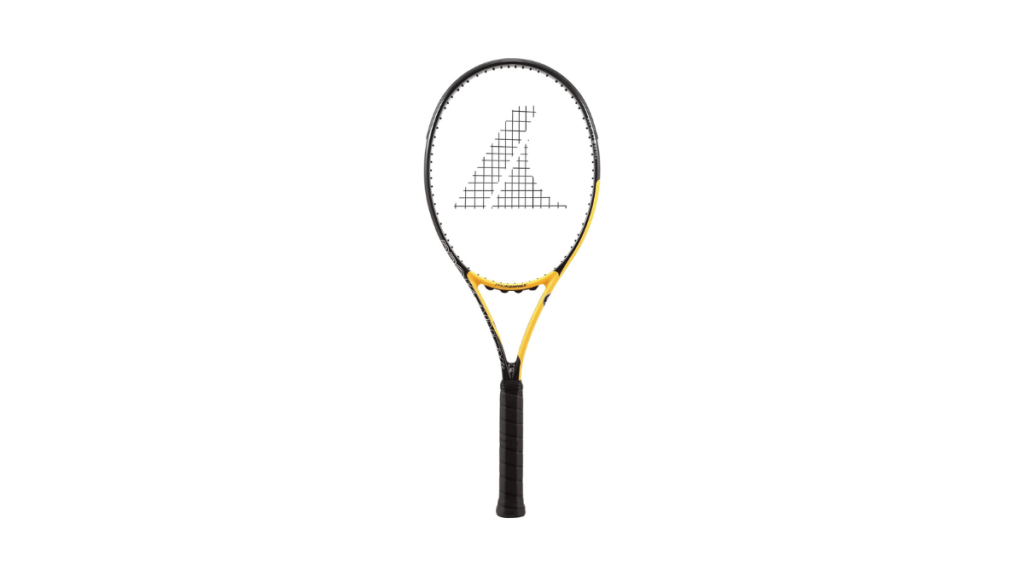
5.0
Specifications:
Power and flexibility in a lightweight racket are something medium-level players need. For elbow tennis, an additional aspect is required in tennis rackets to minimize vibration. All of that is found in the PRO KENNEX Black Ace 315. Weighing 315 grams with 26.97 inches in length, it’s suitable for managing tennis elbow discomfort.
The 58 RA stiffness rating combined with a 16×19 string pattern absorbs shocks well. The head size of 99.98 in² gives you forgiveness and a bigger area to hit. Plus, it’s got SpiralTech Carbon and Kinetic technology, which dampens vibrations and protects against tennis elbow. However, it’s not for Pros who want a higher level of responsiveness.
Also, shock absorption may be suitable for tennis elbow, but it removes the “feel” from your arm so that accuracy may be lacking. Players who rely on feeling the racket might not prefer this one. With practice, you can get better at responsiveness and accuracy as well, so the Black Ace 315 is a top choice.
3. VOLKL V-Cell 1 – Best Shock Absorbing Tennis Racket for Tennis Elbow
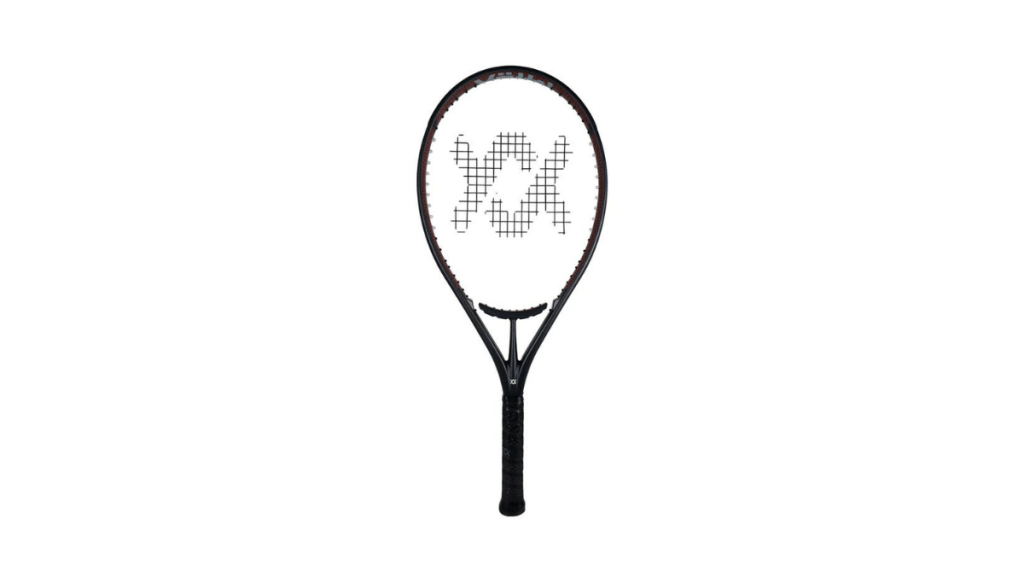
5.0
Specifications:
The best Tennis racket with shock absorption for tennis elbow is VOLKL V-Cell 1. It’s for intermediate or advanced players who need power and spin without compromising the comfort of their arms. You get unmatched shock absorption thanks to advanced technologies like a VTex butt cap and a unique Power Arm design. With VCell material and a light 255 g weight, vibration is dampened, and you won’t tire out as quickly during play.
My tennis elbow made it hard to enjoy the spin I used to get with Babolat rackets. But when I tried the VOLKL V-Cell 1, its special string pattern (16×17) gave me the extra spin I was missing. Also, it comes packed with features like REVA and V-Sensor Handle. It’s known as the most comfortable and playable oversized racket in tennis.
Just a heads up: This racket has a high swing weight, meaning it might strain your arm more during swings. While its swing weight can make hits more powerful, it’s not as easy to control. Also, the large head size (115 in sq) is forgiving on the arms but feels bulky. Therefore, it’s not recommended for beginners, but seniors with advanced stroke techniques will love it. Beginners can consider alternatives like the Prince Phantom 100G.
4. Prince Phantom 100 G – Best Beginner Tennis Racket for Tennis Elbow
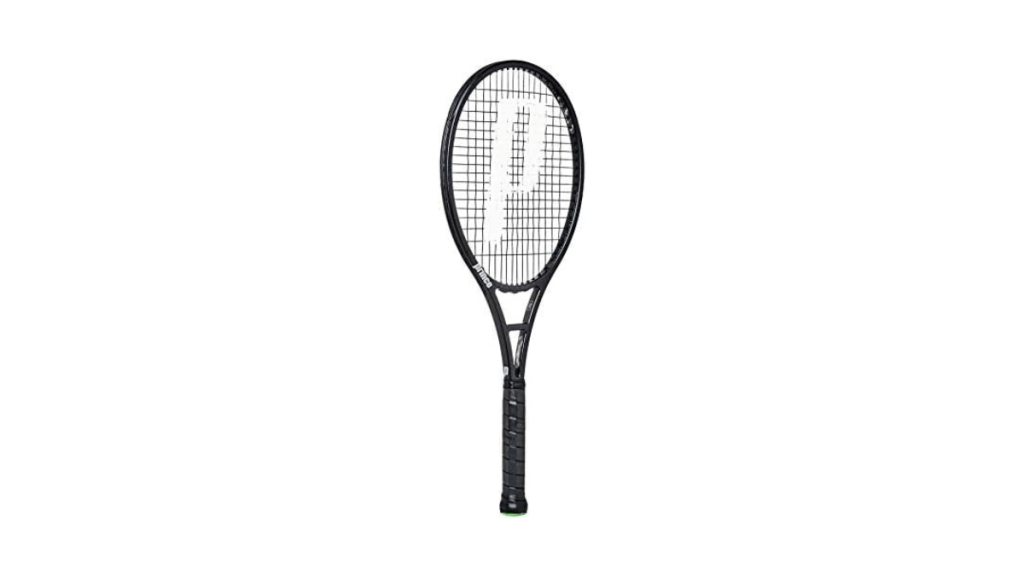
5.0
Specifications:
As beginners, it’s easy to get tennis elbow as your tendon muscles take time to be strengthened. The 315-gram with 290 swing weight Prince Phantom 100G racket is perfect for that. It’s affordable and not hard to use. I call it the ideal “Rehab” racket; doctors even recommend it.
The racket uses unique Textreme technology, making it stable but flexible. It also has technologies like the Constant Taper System (CTS) and the Anti Torque System (ATS) to give you good power and control. The racket is balanced and not too heavy so that you can move it around easily. It is versatile for hitting close to the net or far back(at baseline). You get accurate shots, strong serves, and spinny hits, so it works well for many different ways of playing. For further comfort, it features a string pattern 16×18, which is gentle on the arm.
Overall, the Prince Phantom 100G is a good choice for beginners who want a comfy racket that’s easy on their arms. Consider other options if you wish to have a racket with more power. Also, the shock absorption is average because it has a thin beam width. But if you want a comfortable, stable, and easy-to-use racket, the Phantom 100G is a great pick.
5. Yonex VCore 100 – Best Spin Shots Tennis Rackets for Tennis Elbow
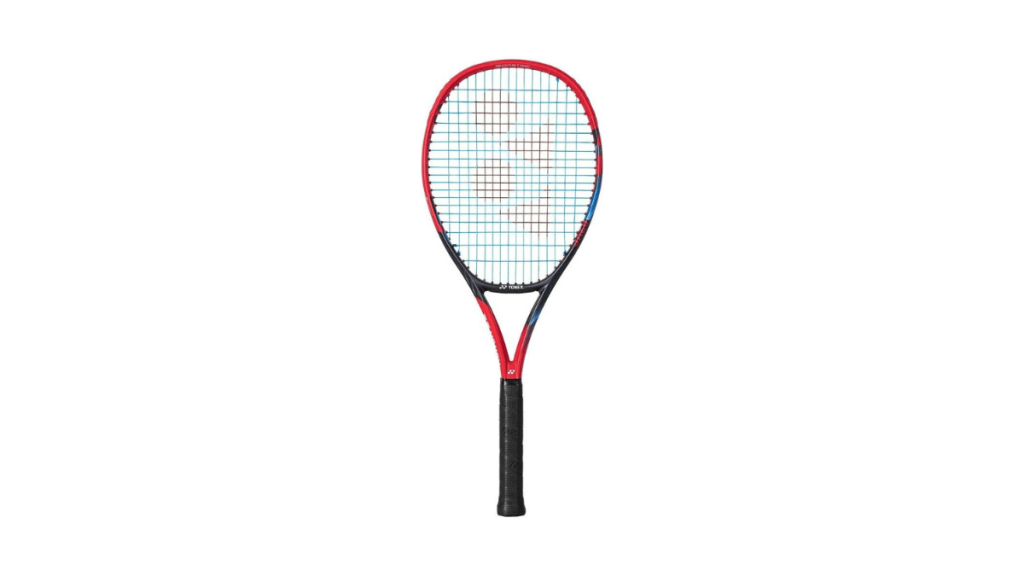
5.0
Specifications:
The Vcore racquet is well-known for its ability to generate spin. When I first tried using poly strings, I experienced some discomfort in my arm but switching back to multifilament strings quickly relieved the soreness.
With its ISOMETRIC technology, you get an enlarged sweet spot, so even if you don’t hit the ball perfectly, you’ll still get that spin you crave. Plus, features like Aero Trench and Aero Fin Technology reduce air resistance, making it easier to whip the racket through the air and add spin to your shots. Now, let’s talk about why it’s so good for tennis elbow. The VCore 100 is built with your comfort in mind. It’s got shock absorption technology that helps reduce vibrations upon impact. Plus, its flexible design and arm-friendly features mean you can play for hours.
When it comes to specs, it’s got a low stiffness rating of 65 RA, a head size of 100 sq.in., and weighs just 300 grams (or 10.6 ounces). The only drawback is that you won’t feel the response of the tennis ball due to excessive dampening. This can make the ball go higher after hitting it, so it’s harder to control where it goes. Therefore, adjusting and finding the correct technique will take some time, but it’s worth it for the performance.
6. Wilson Blade 98 V8 – Best Flexible Tennis Racket for Tennis Elbow
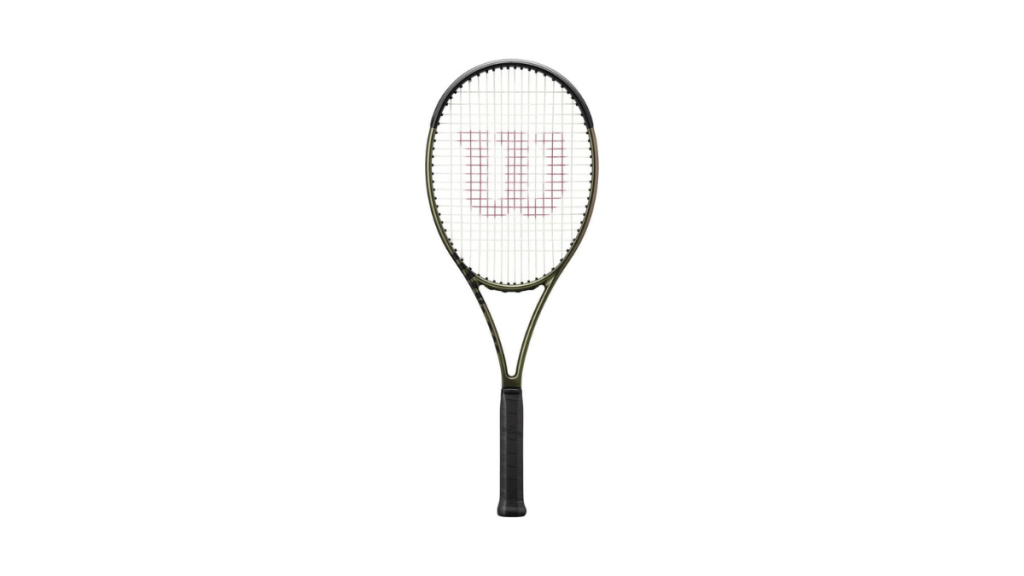
4.8
Specifications:
Wilson is known for its vibration-dampening tech, but I was impressed with the flexible frame of the Wilson Blade 98 V8 tennis racket. The racket is made of a mix of graphite and basalt with a lower stiffness rating(61 RA). Using this, I stopped feeling tired or hurt after long practice hours.
One of the standout features is FeelFlex technology or FortyFive. This makes the racket flexible in different directions, so it’s more forgiving for a comfortable playing experience. It also has features like the DirectConnect Handle and Ergonomic Butt Cap for secure grip and stable performance. While not as powerful as some stiffer racquets, the Blade 98 V8 emphasizes control. With the right technique, you can hit power shots without straining your arm.
Although it’s versatile, it might feel a bit shaky when playing against hard hitters. To get better returns and control in fast rallies, I recommend adding leather grips. Due to the 16×19 string pattern, it’s good at spinning the ball. But when facing fast serves, the 98-inch head size can be hard to handle. It’s not a deal breaker; you just have to adjust your timing and technique. Just remember to use soft poly strings.
7. Pro Kennex Ki Q+Tour Pro(325) – Best Accurate Tennis Racket for Tennis Elbow
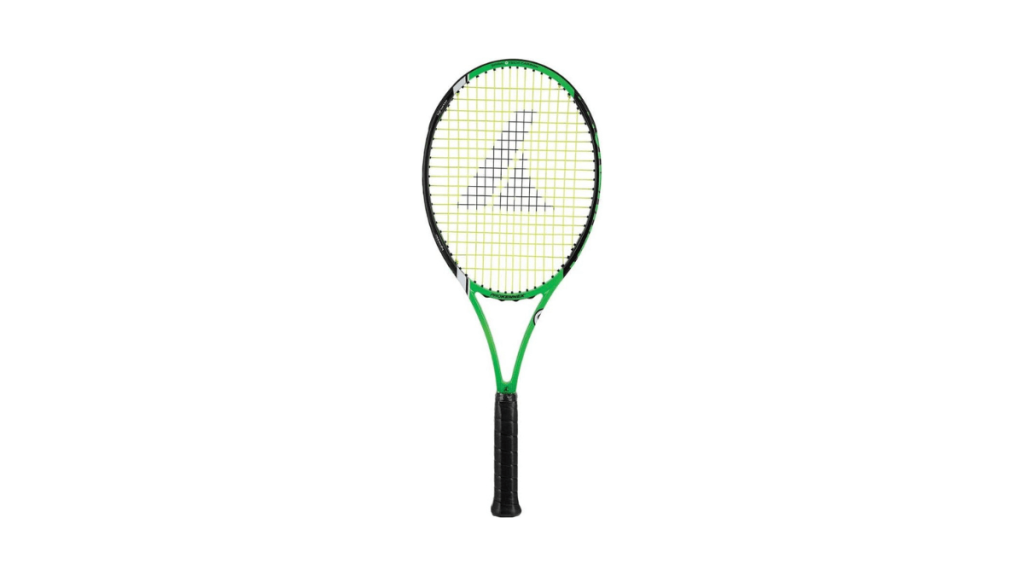
4.8
Specifications:
Accuracy depends on the sweet spot. The Pro Kennex Ki Q+Tour Pro(325) uses the Q Plus System to give you a bigger and better sweet spot. When we talk about the “sweet spot,” we’re referring to the best place on the racquet to hit the ball for maximum accuracy and speed. Even with a 98-square-inch head size, it is easier to hit the ball right with precision.
The performance is impressive thanks to Pro Kennex’s signature Kinetic Quad Focus technology. This technology effectively dampens vibrations while minimizing the risk of arm strain. With a low stiffness rating of 62 RA and a weight balance that reduces strain on the arm, it’s a lifesaver for players dealing with tennis elbow.
Unlike the Wilson Blade 98, the Pro Kennex Ki Q+Tour Pro has a swing weight of 330+. Therefore, it gives you the stability you need to play against strong hitters. This racquet looks impressive and feels great, but the 325-gram weight and higher swing weight will quickly tire you. We chose this for headlight balance and high-accuracy shots. While the racquet offers excellent control, its dense 18×20 string pattern makes generating spin slightly more challenging.
8. HEAD Graphene 360+ Gravity Tour – Best Powerful Tennis Rackets for Tennis Elbow
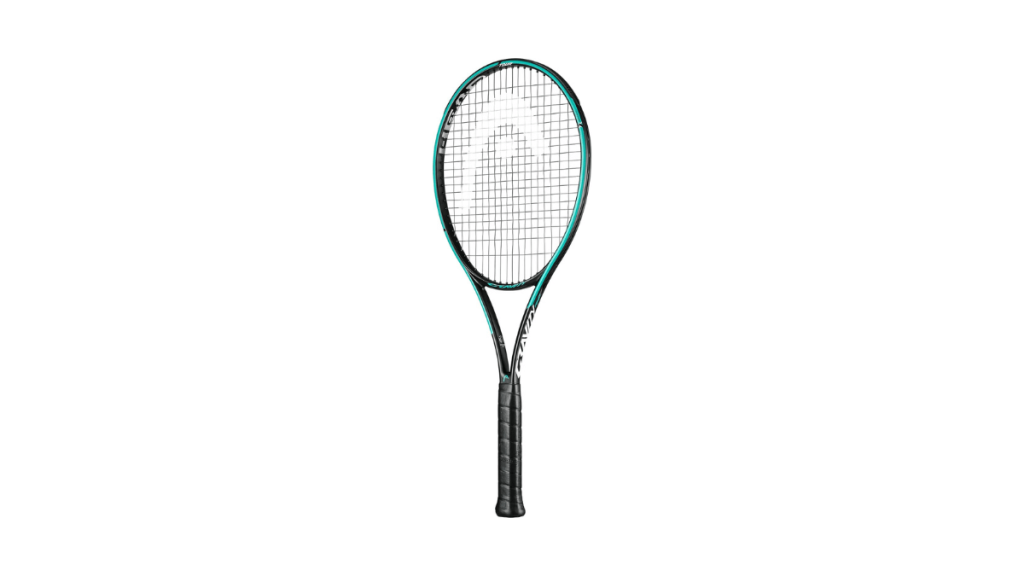
4.5
Specifications:
Volleying with tennis elbow is next-level pain, and to tackle that, you need a powerful racket like HEAD Graphene 360+ Gravity Tour. While slightly less balanced towards the head, this racket excels at handling swift passing shots. Its 22-millimeter beam delivers significant hitting power while ensuring a controlled feel upon impact.
The Gravity Tour’s remarkable technology, Graphene 360+, helps make it easier to swing the racket and hit the ball harder. This technology also makes the racket feel comfortable, vital for people whose arms might get sore. Additionally, the use of a vibration-dampening system minimizes unwanted vibrations. You can practice for long hours.
Talking specs, it has an ideal 100-head size, 62 RA, 305 grams, and head-light (HL) balance. All of this is suitable for players with tennis elbows. But it’s expensive, so it might not be the best choice if you’re trying to save money. Also, it’s not the best for hitting shots with heavy spins because of how the strings are set up(18 x 20 string pattern) and how tight they are. Overall, the Gravity Tour feels good to use and helps you hit powerful shots without hurting your arm.
How to Choose Ergonomic Tennis Rackets for Tennis Elbows?
Tennis is a great sport, but it can be painful if you have a tennis elbow. One big reason for this pain is using the wrong racket. I have given our recommendations above, but we don’t gatekeep! I’ll gladly share tips on choosing the right racket so you can enjoy playing without pain, even if you have tennis elbow. Whether you’re new to tennis or a pro, knowing these factors will help you improve:
Understanding the Impact of Tennis Racket Weight on Tennis Elbow
- Overall Weight
The weight of your unstrung and strung racket significantly affects how much stress is placed on your arm, elbow, and shoulder.
If you have a tennis elbow, using a lightweight racket is a good idea because it is easy to swing. But it does not absorb more shock, which is only possible with a heavy-weight racket. And too heavy a racket can strain your arm and make things worse.
So, the best bet is to find a racket that’s light enough. Aim for something in the middle, around 300 to 315 grams. That way, you can play comfortably without hurting your arm.
- Finding the Right Weight Balance
Another thing is the weight balance. Weight balance means where the racket is heavier–At the handle(HH) or the head(HL). If your racket weighs 300 grams or more, it’s better to pick a head-light(HL) tennis racket. But it might make your arm hurt more if you hit the ball hard. So, another safe choice is a tennis racket with a head-heavy (HH) weight balance and a weight lighter than 300 grams.
- Swing weight
When choosing a tennis racket, it’s important to consider how heavy it feels when you swing it–The swing weight. You don’t want the swing weight to be too high because that can hurt your arm and cause tennis elbow. For tennis elbow, it’s best to go for a racket with a lower swing weight to avoid unnecessary strain and discomfort.
How Tennis Racket Construction Affects Tennis Elbow
- Racket Stiffness(RA)
One thing to pay attention to is how stiff the racket is. Rackets with low stiffness bend and absorb shock better, which is gentler on your arm. Stiff Rackets can transfer more shock to your arm and are the most common cause of tennis elbow.
I recommend a lower stiffness rating for tennis elbow, between 50 and 60. But if you’re a more experienced player, you can go for a racquet with a stiffness rating between 61 and 70. This way, you get a good balance of power and control without hurting your arm too much–Never go above 70 RA if you suffer from tennis elbow.
- Beam Thickness
The beam width or thickness of a tennis racket is about how wide the side of the racket is. A racket with a thicker beam usually means it can hit the ball harder. But it also makes the racket stiffer, which is not good if you have elbow pain.
For people with tennis elbows, tennis rackets with a beam thickness between 20 to 27 mm width are recommended.
- Head Size
Rackets with head sizes of 98 to 105 square inches are recommended for players with tennis elbow. They offer forgiveness, power, and a larger hitting area. With these combined traits, you’re less likely to hit balls in a way that hurts your arm or elbow.
- Racket Length
When you have tennis elbow, a racket with a short length, like the standard 27-inch size, or a maximum of 29 inches is better. Longer rackets, usually over 29 inches, can put more pressure on your arm when you swing. Such features make the condition worse. So, it’s best to stick to the standard length and make playing easier.
The Influence of Tennis Racket’s Strings on Tennis Elbow
- Choosing the Right String Material
Avoid using stiff strings like polyester! Instead, opt for softer strings like natural gut or multifilament. These softer strings help reduce shock and stress on your elbow and overall arm. We recommend using the Tecnifibre X-One Biphase String or the Tecnifibre TGV tennis string.
- String Tension
Additionally, consider using a lower string tension, preferably in the low 50s or even lower, to further reduce strain on your arm. It’s also important to regularly change your strings as they lose tension and elasticity over time. Do not be lazy, as overused strings in tennis rackets can worsen your tennis elbow.
- String Pattern Recommendations
When we talk about the string pattern of a tennis racket, we’re talking about how close together the strings are. An “open” string pattern means the strings are spread out more, like in a 16×19 or 16×18 setup. It soaks up shock and vibrations better, which means less strain on your arm. This kind of racket also helps you hit harder shots without tiring out. Do not use a dense string pattern like an 18×20 setup, as it can be more demanding on your arm.
Other Possible Additional Factors
- Grip Size and Tennis Ball Condition
Making sure your tennis racket’s grip is just right can help avoid tennis elbow. If the grip is too small, it can strain your arm muscles and cause discomfort. Measure your grip size correctly, and consider adding an extra grip if needed.
And remember to use new tennis balls instead of old ones, which can feel challenging and put extra pressure on your arms. You can play without worrying about developing tennis elbow by getting the grip size right and using fresh tennis balls.
- Players Technique Matters
Tennis elbow happens when you don’t hit the ball correctly, not just when you hit it too hard. For example, hitting the ball off-center can make your arm vibrate and hurt your elbow. If you improve how you hit the ball, you can lower the chance of getting hurt.
Some players try to use only their arm muscles to hit the ball hard, which can strain their arm, wrist, and shoulder. Instead, using your legs and body weight to add power to your shots is better.
Another big reason for tennis elbow is a one-handed backhand stroke, especially if you’re not a professional player. But it’s not just the backhand—other moves like serves, forehands, and using both hands for the backhand can also cause trouble if you don’t do them right. Loosening your grip on the racket and trying a two-handed backhand might help.
- Tennis Racket’s Tech Talk for Tennis Elbow
Numerous tennis racket manufacturers incorporate innovative technology into their latest models to enhance comfort. They’re trying to make it so your joints and muscles don’t hurt as much when you play.
One example is Prokennex’s Kinetic technology. It has unique capsules that help the racket stay steady, so your shot can still be good even if you don’t hit the ball right in the middle. This technology helps prevent tennis elbow, even if you’re not using the perfect technique.
Another example is Wilson’s Triad technology. It’s like having the best parts of two different rackets in one. A particular layer absorbs the shock from hitting the ball, making it more comfortable to play with and helping prevent tennis elbow.
Other companies also have a similar tech(Active Damping Technology) to help with tennis elbow.
Final Words
In summary, finding the right tennis racket to ease tennis elbow involves a mix of science, tech, and personal choice. Trying out tennis elbow support straps could also be helpful. Remember to also work on your technique and consider seeing a physiotherapist if needed. Remember, the perfect racket isn’t just about playing better—It’s about keeping your body healthy in the long run. The rackets I’ve recommended can make playing tennis easier on your arm. That being said, here are our top three picks of best tennis rackets for tennis elbow:
- Wilson Clash 100 Pro V2-Best For Pros: The upgraded Wilson Clash 100 Pro V2 is perfect for advanced players seeking power and spin while protecting against tennis elbow discomfort. It offers versatility for various playing styles, although it may lack some control.
- PRO KENNEX Black Ace 315-Best for intermediate players: With PRO KENNEX Black Ace 315, you get combined power and flexibility for tennis elbow relief. While it offers stability and spin generation, its reduced “feel” may affect accuracy.
- VOLKL V-Cell 1-Best for Shock Absorption: Designed for comfort and shock absorption, the VOLKL V-Cell 1 is a top choice for intermediate to advanced players seeking power. For beginners, I recommend Prince Phantom 100G.
Faqs
What tennis rackets are arm-friendly rackets?
Arm-friendly rackets include those with a lower stiffness rating (50-60 RA), head sizes of 98 to 105 square inches, and a beam thickness between 20 and 27 mm wide.
Can using a heavy racket cause tennis elbow?
A heavy racket can potentially cause tennis elbow, as excessive weight can strain the arm. Avoid a dense string pattern like an 18×20 setup.
How do you make an already-bought tennis racket more elbow-friendly?
If you can’t buy a new racket, use tennis racket dampeners and elbow support straps. Also, Lower string tension to the mid to high 40s and choose appropriate strings with proper tension. Ensure proper form, rest well, and stretch regularly to prevent strain.
